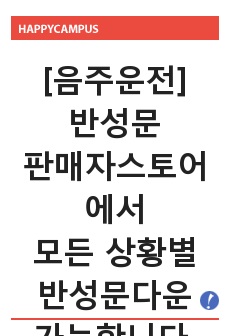일본의 오봉에 비추어 본 한국의 조상숭배 문화 ―일본 관서지역과 고야산 오봉, 현지 조사를 통하여―
* 본 문서는 배포용으로 복사 및 편집이 불가합니다.
서지정보
ㆍ발행기관 : 동방문화대학원대학교 불교문화예술연구소
ㆍ수록지정보 : 불교문예연구 / 9권
ㆍ저자명 : 윤소희
ㆍ저자명 : 윤소희
목차
Ⅰ. 머리말Ⅱ. 조상숭배문화의 불교적 수용
Ⅲ. 일본 간사이 지역의 오봉
Ⅳ. 고야산 일대 사찰의 오봉
Ⅴ. 일본의 오봉과 한국의 우란분
Ⅵ. 맺음말
한국어 초록
본고에서는 일본 관서지역과 고야산 일대 사찰에서 행하는 오봉(お盆)에 대한 현지조사 연구를 계기로 우란분경과 목련경이 성립된 배경과 한 국의 우란분 신행을 함께 조명하였다. 오늘날 중국과 대만에서 농력(農曆: 음력)7월 ‘귀신의 달’을 맞아 행하는 민간 신앙과 미신적 행위들을 불교 신 행으로 극복해 가는 모습에서 이들 경전이 쓰여진 당시의 사회ㆍ문화적 실 상을 짐작할 수 있었다.일본에는 유교가 죽음에 관련된 의례를 담당했던 적이 없었던데 비해 한 국에는 유교적 제의가 사대사상과 맞물려 확산된 데다, 효(孝)를 통치기반 으로 한 조선시대에는 유교적 제사에 그 자리를 내어주었고, 불교적 조상숭 배는 ‘천도’라는 한정된 신행으로 축소되었다. 16세기말 일본에 기독교의 침투가 있었으나 이와 맞선 사청제도(寺請制度)로써 민중의 삶이 사찰과 더욱 밀착하게 되었고, 명치유신(明治維新) 이후 오봉이 양력 8월로 전환 됨으로써 오늘날 대중적 축제로 안착하였다.
이에 비해 한국의 조상숭배문화는 일제의 한국문화말살정책, 기독교문화 의 팽배가 겹치면서 왜곡과 단절의 위기를 맞았다. 농경생활에 의한 ‘백중’ 은 ‘우란분’으로, ‘천도’의 개념은 ‘공양과 시식’의 추선배례로, 음력은 양력 으로, 명절 증후군을 불러오는 단독 제의의 중압감은 합동재의로써 탈피할 수 있다. 우란분을 통한 조상합동재의 축제는 불교의 대중화에 기여하는 바 가 클 것이다.
영어 초록
From ancient times, people have regarded July as the "ghost month" in China. Their ancestral spirits were considered very important among the ghosts, and thus were the subject of memorial services and mercy offerings. It was likewise in Korea and Japan. But following the inflow of Buddhism into north-east Asia, customs changed. The Uranbun Sutra(盂蘭盆經) was held capable of leading deceased ancestral spirits to heaven by way of offerings awarded to the monks. It was accompanied by the Mokruyn Sutra(目蓮經), which added the idea of filial piety.Today, however, the Uranbun tradition is maintained in Korea only as an old wives tale. Yet there is a big related festival in Japan. My studies into this subject, conducted through the Gansai area and the temples at Goya mountain in Japan, confirmed that the difference in retained emphasis is a result of historical development.
Confucian funeral rituals have never taken hold in Japan. Also, while Christianity made inroads into Japan, the Japanese ruler Ieyasu Tokugawa(1542~1616) intervened to suppress it and ensure funeral rituals retained their Buddhist identity. From that time, the Obon(お盆) became a people's festival and Japanese funeral rituals were entrenched in Buddhism.
But in Korea, during the Joseon dynasty Buddhism was suppressed, Confucian funeral rituals and ancestor worship have taken hold. During the Japanese colonial rule of Korea, the colonisers sought to degrade all of custom include ancestor worship as part of a more general attempt to nullify traditional Korean popular beliefs and traditions. Then following liberation, Christianity made rapid and widespread inroads into Korean life, further eroding traditions of ancestor worship.
Today, the ceremony for the Royal Ancestor's Shrine is UNESCO recognized. However, it constitutes little more than performance. The labor of preparing the traditional dishes involved in paying ancestral homage, for example, are seen as burdensome to many in the newer generations.
Large numbers of people, not only Buddhists and Confucianists, but also those of no professed religion, go to church and do not perform traditional ancestral rites. Performing ancestral rites on an individual basis is burdensome. But if people were to worship together in the temple this would lessen the burden. It would also serve to festivalize the rites ceremonies and repopularize Buddhism, as well as resolve the conflicts of tradition which can arise in modern families.
참고 자료
없음태그
"불교문예연구"의 다른 논문
 관음보살의 천태선적 이해31페이지
관음보살의 천태선적 이해31페이지 관계중독에 대한 자기치유 고찰 - 관무량수경 16관법 중 보수관(寶樹觀)을 중심으로 -32페이지
관계중독에 대한 자기치유 고찰 - 관무량수경 16관법 중 보수관(寶樹觀)을 중심으로 -32페이지 박생광 회화에 나타난 불교적 특징 고찰26페이지
박생광 회화에 나타난 불교적 특징 고찰26페이지 이규보 시론의 특징과 그 시적 변용의 미학29페이지
이규보 시론의 특징과 그 시적 변용의 미학29페이지 차크라명상을 적용한 정신건강 프로그램20페이지
차크라명상을 적용한 정신건강 프로그램20페이지 차크라명상을 적용한 정신건강 프로그램20페이지
차크라명상을 적용한 정신건강 프로그램20페이지 종교인구 감소의 종교사회학적 의미와 불교계의 과제37페이지
종교인구 감소의 종교사회학적 의미와 불교계의 과제37페이지 동아시아 삼국의 전통지화 비교 고찰27페이지
동아시아 삼국의 전통지화 비교 고찰27페이지 근대 불교의례의 변화와 시대적 의미31페이지
근대 불교의례의 변화와 시대적 의미31페이지 조선전기 수륙재의 내용과 성격―천도의례(薦度儀禮)의 성격 및 무차대회(無遮大會)와의 개념적 차별성을..46페이지
조선전기 수륙재의 내용과 성격―천도의례(薦度儀禮)의 성격 및 무차대회(無遮大會)와의 개념적 차별성을..46페이지


















